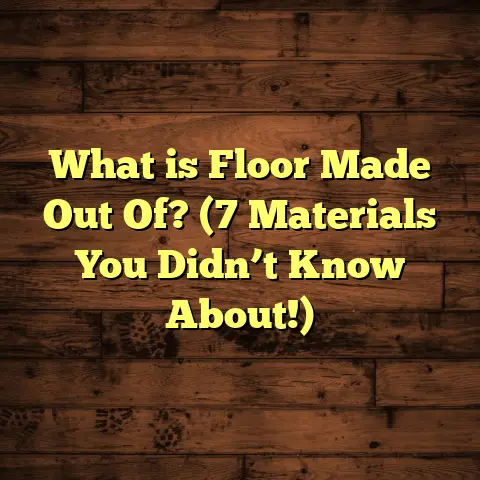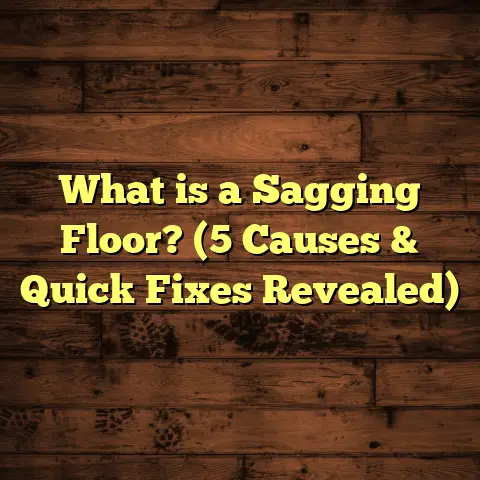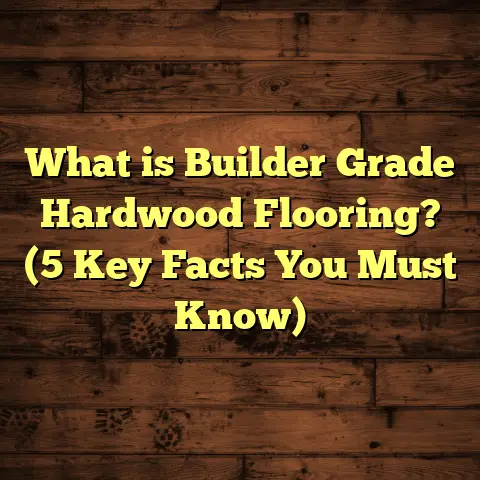What Is Duchateau Floors? (5 Reasons They Elevate Spaces)
Ever thought about how much your floors truly affect the feel
and function of your home? How often do we stop to think about
the surface beneath our feet—not just as a background but as a
key part of our living environment? I remember when I started
working in flooring, I underestimated the impact the right floor
could have on a space. Then I discovered Duchateau flooring, and
everything shifted.
Let me ask you this: How many hours have you spent researching
hardwood floors, trying to figure out which brand or style will
actually live up to your expectations? Or maybe you’ve been stuck
wondering if engineered wood is worth the extra cost over laminate
or vinyl. If that sounds familiar, you’re not alone. I’ve walked that
path many times with clients and on my own projects.
What Is Duchateau Flooring?
Duchateau is a premium brand of engineered hardwood flooring that
puts craftsmanship and authentic aesthetics front and center. The
company is based in Canada and has earned a reputation for blending
traditional hardwood beauty with modern technology.
Unlike solid hardwood, which is a single piece of wood cut from a tree,
engineered hardwood like Duchateau consists of multiple layers. The top
layer—a thick veneer of real hardwood—provides the look and feel of genuine
wood. Beneath it are layers of plywood or composite wood arranged in a cross- grain pattern. This layered construction gives engineered hardwood greater
stability against moisture and temperature changes.
Why does this matter? Well, solid hardwood can expand and contract a lot
with humidity shifts, leading to warping or gaps over time if not properly
installed or maintained. Engineered hardwood’s construction helps prevent
those issues, making it a better fit for places like kitchens, basements, or
areas with radiant heating systems.
Duchateau takes this concept further by focusing on finishes and textures that
look hand-crafted. Their floors often feature hand-scraped surfaces, which
means the planks have slight indentations and grooves added manually to mimic
aged wood. This technique gives every floor a unique character instead of that
uniform “factory finish” look.
The company offers a wide range of species including white oak, hickory, and maple,
each with distinct stains and finishes. From light, natural tones to deep greys and
charcoal hues, their palette fits various design styles—from rustic farmhouse to
modern industrial.
When I installed Duchateau floors for the first time in a client’s home, I was struck by how the room immediately felt warmer and more inviting. The subtle hand-scraping added texture you could feel underfoot but didn’t interfere with cleaning or maintenance.
Engineered Hardwood: Why It Made Sense for Me
I have worked with solid hardwood floors for years before adding Duchateau to my offerings. The shift to engineered hardwood was partly practical—it’s easier to install in challenging environments—but also aesthetic. Clients wanted floors that looked real but could handle busy family life.
One job involved a waterfront condo where humidity swings were extreme. Solid wood wasn’t an option there without risking damage. I suggested Duchateau’s engineered flooring, and it held up beautifully for years after installation.
5 Reasons Duchateau Floors Elevate Spaces
Let me walk you through why I believe Duchateau floors don’t just cover your floor—they actually elevate the entire space.
1. Real Wood Beauty with Depth and Character
Have you ever walked into a room where the floor makes you stop and just admire it? That’s what happens with Duchateau floors. The hand-scraped texture creates subtle shadows and highlights that change with the light during the day.
I once had a customer tell me their guests kept asking if their floor was “vintage” or reclaimed wood because it looked so natural and aged. That’s exactly the effect Duchateau aims for without sacrificing durability.
In my projects, installing these floors has often led to clients rethinking their whole decor scheme because the floors give off such a strong style statement. It’s not just about color or gloss—it’s about texture and story.
From a data perspective, homes with hardwood floors typically sell faster and at higher prices than those with carpet or laminate. According to the National Association of Realtors (NAR), buyers are willing to pay an average premium of 2-5% more for homes featuring hardwood flooring. Duchateau’s authentic looks help deliver on that promise better than many competitors because they don’t look “cookie cutter.”
2. Durability That Handles Life’s Messes
I hear it all the time: “My kids are messy,” or “We have pets who love running around.” Floors need to be tough but also forgiving.
Duchateau floors are built with durability in mind. The top layer is thick enough to be sanded and refinished multiple times—unlike some engineered options with ultra-thin veneers that can only last a few years.
They use an aluminum oxide finish that resists scratches and stains better than traditional polyurethane finishes. The Janka hardness rating—a standard test measuring wood hardness—varies by species but typically ranges from 1,200-1,300 for oak options here, which means good resistance against dents from dropped objects or pet claws.
One family I worked with has two young boys and a Labrador retriever who’s basically a furry tornado indoors. After two years, the floor still looks great despite high traffic and occasional spills. The hand-scraped finish helps hide minor scratches or scuffs because the texture already varies naturally.
3. Environmentally Friendly Choices Matter
Sustainability isn’t just a buzzword; it was important to me when choosing what products to recommend.
Duchateau sources wood from certified forests managed for sustainability—meaning trees are replanted and harvested responsibly. Because engineered hardwood uses thinner top layers combined with plywood core layers made from smaller pieces of wood bonded together, it reduces waste compared to solid planks.
Their low-VOC finishes improve indoor air quality by reducing harmful chemical emissions—a big deal for families sensitive to allergens or respiratory issues.
In my experience working on green-building projects, Duchateau floors fit well within LEED certification requirements or other eco-friendly standards homeowners might be aiming for.
4. Versatility in Installation Options
I’ve installed floors in all sorts of conditions—from new construction to historic renovations. One thing that makes Duchateau stand out is how flexible it is when it comes to installation.
You can nail it down if you have a wooden subfloor, glue it down over concrete slabs, or float it over existing flooring to save time and mess during remodels.
This flexibility made my life easier on jobs where unexpected site conditions popped up—sometimes old tile or concrete wasn’t level enough for solid hardwood but worked fine with floating engineered planks.
I do want to mention one challenge here: because these floors come in unique colors and widths, finding matching planks years later for repairs can be tricky unless you order extra upfront or keep some spare boards.
5. Cost Considerations: Balancing Investment With Value
Here’s where most people pause: How much will this all cost me?
Duchateau floors are positioned as a premium product, so they come at a higher price point than basic laminate or engineered brands found at big-box stores.
Material costs usually fall between $7-$12 per square foot. Installation runs roughly $4-$8 per square foot depending on complexity and location.
When I plan projects now, I rely heavily on tools like FloorTally to get accurate cost estimates quickly. It lets me input local labor rates, material choices, waste factors (I always add around 5-10% for cutting waste), and installation types all in one place.
Using FloorTally has saved me tons of time compared to calling multiple suppliers separately or guessing numbers during client estimates.
While Duchateau isn’t cheap upfront, its durability means fewer replacements down the road and higher resale value on your home—a tradeoff many clients find worthwhile.
Challenges I’ve Faced With Duchateau Floors
No product is perfect, right? Here are some real-world challenges I’ve come across:
- Higher Initial Cost: Some clients hesitate due to price despite understanding long-term benefits.
- Availability: Not every dealer stocks every style—sometimes lead times can stretch several weeks.
- Color Matching: Unique stains make matching planks difficult if repairs are needed later.
- Cleaning Textured Surfaces: Hand-scraped textures look amazing but require more regular cleaning since dust can settle into grooves.
- Installation Skill Needed: Floating installations are straightforward for pros but tricky for DIYers unfamiliar with moisture barriers or expansion gaps.
One client who loved the rustic look struggled initially with pet hair hiding in the grooves of the hand-scraped finish. After trying different tools, we settled on microfiber mops combined with frequent vacuuming using soft brush heads to avoid scratches.
Personal Stories: Real Experiences With Duchateau Flooring
Story One: The Coastal Condo Rescue
I was hired to replace worn-out vinyl floors in a beachfront condo facing constant humidity swings. Previous owners had installed solid hardwood which warped badly after just two years due to moisture exposure.
We chose Duchateau’s engineered white oak with a matte finish because it offered natural beauty plus stability against moisture changes.
A year later, the homeowner told me they were amazed how well the floor handled salt air and temperature shifts without any gaps or buckling—a problem they’d faced repeatedly before.
Story Two: A Family Home Built for Play
The Smith family had two toddlers and two dogs who were “always on the move.” They wanted floors that could take spills, scratches, and heavy foot traffic without looking like a disaster zone after six months.
We went with Duchateau hickory in a medium stain with hand-scraped texture.
After three years, despite daily wear and tear, the floors looked almost new during our follow-up visit. They said they loved how the textured surface masked minor imperfections compared to their previous flat-finished floors.
Research Snapshot: Why Engineered Hardwood Is Growing
Market data from industry reports shows engineered hardwood flooring sales have grown steadily over the past decade due to changing consumer needs:
- Moisture resistance appeals as more homes incorporate open-concept kitchens and basements.
- Faster installation methods reduce labor costs.
- Wide selection of finishes attracts design-conscious buyers.
- Environmental awareness drives demand for sustainably sourced products.
Duchateau fits this trend perfectly by combining engineering with artistry—offering consumers both practicality and luxury in one package.
How I Use FloorTally To Manage Costs In My Projects
Managing flooring project budgets can get complicated fast—especially when client expectations meet real-world site conditions. Early in my career, I often underestimated waste percentages or labor time leading to budget overruns or unhappy clients.
FloorTally changed all that:
- It calculates material needs including waste factors automatically.
- It pulls local labor rates based on zip code.
- It allows me to compare costs for different materials side-by-side.
- It provides clear visual breakdowns clients can understand easily.
- It saves hours I used to spend emailing subcontractors asking for quotes.
- It helps me set realistic budgets upfront so clients know what to expect before signing contracts.
This tool has made my workflow smoother and improved trust with clients because pricing transparency improves communication from day one.
Maintenance Tips From My Experience With Duchateau Floors
Owning or installing these floors means committing to care routines that keep them looking great:
- Use pH-neutral hardwood cleaners instead of harsh chemicals.
- Avoid wet mopping; damp mop only when necessary.
- Place mats at entrances to reduce dirt tracked inside.
- Use furniture pads under legs to prevent dents.
- Vacuum regularly with soft brush attachments.
- For scratches, consider minor touch-up kits from Duchateau or professional refinishing after several years.
Clients who follow these tips report their floors stay beautiful much longer than expected—even in high-traffic areas.
Final Thoughts: Is Duchateau Right For You?
If you’re still wondering whether Duchateau floors fit your lifestyle or budget consider these:
- Do you want authentic wood texture that adds personality?
- Is durability important because of pets or kids?
- Do you prefer an eco-conscious product?
- Are you ready for an upfront investment that pays off long-term?
- Can you plan your budget carefully using tools like FloorTally?
For many homeowners I’ve worked with, Duchateau has been the answer—a floor that truly elevates their home experience by combining beauty, strength, and sustainability in one package.
If you want floors that become part of your home’s story rather than just something underfoot, Duchateau might be exactly what you’re looking for.
If you’d like advice on installation methods, maintenance routines, or budget planning related to Duchateau or other flooring options, just ask! I’m happy to share more insights based on real-world experience.





